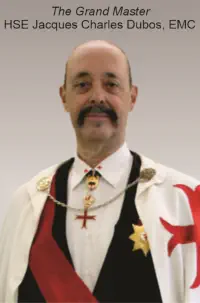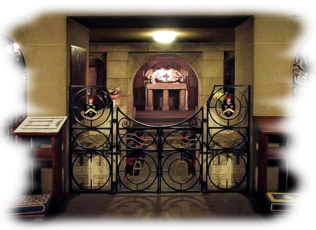


The Modern Era

The
Templar
Order
was
established
in
1705
by
the
Duke
of
Orleans
but
declined
by
the
early
1800s,
only
to
be
revitalised
in
1804
under
Napoleon
Bonaparte.
Bernard-
Raymond
Fabré-Palaprat
became
Grand
Master,
though
his
leadership
was
not
widely recognised in France.
After
his
death
in
1838,
Sir
William
Sidney
Smith
succeeded
him
until
his
own
passing
in
1858.
The
order
faced
annulment
in
France
in
1892
due
to
scandals,
with
records moved to the National Archives of France.
In
Belgium,
a
"Templar
Secretariat"
was
formed
in
1894
and
evolved
into
another
Templar
organisation
founded
by
the
French
community.
In
1935,
Emile
Clement
Joseph
Isaac
Vandenberg
became
Regent
and
transferred
control
of
the
archives
to
Portugal
during
World
War
II
to
protect them from Nazi interests.
Antonio
Campello
de
Souza
Fontes
received
these
archives
but
faced
legitimacy
challenges
after
becoming
Regent.
Following
Antonio's
death
in
1960,
he
named
his
son
Fernando
as
successor
which
was
not
strictly
permissable
under
the
Charter
of
the
Order.
Nevertheless,
despite
some
members
leaving
the
Order,
most
dedicated
members
of
the
Order
remained loyal until Fontes' death in 2018.
Today,
under
Grand
Master
His
Excellency
Chevalier
Jacques
Dubos
from
Switzerland,
the
Order
has
numerous Grand Priories worldwide with thousands of members.
In
England,
membership
has
grown
in
recent
years
and
we
are
now
one
of
the
largest
Grand
Priories
in
the
international
Order.
Full
membership
is
open
to
Christian
men
and
women
over
eighteen
committed
to
Christian
Unity
and
values
while serving the Order.
Templars in England

© OSMTH England 2024



OSMTH and the Grand Priory of England is a chivalric non-denominational Christian
organisation whose objects are the Christian values of Faith, Hope, and Charity.
We are not a political organisation, are not associated with any political
organisation and have no political aims or ambitions.
We emphatically denounce all those who seek to besmirch the honourable
reputation of the Knights Templar for any political, subversive or unlawful activity.
T
he
Knights
Templar's
legacy
in
England
is
a
testament
to
the
enduring
spirit
of
courage
and
unity.
From
their
early
days,
they
left
an
indelible
mark
on
medieval
English
history,
playing
pivotal
roles
during
monumental
events
like
the
creation
of
the
Magna
Carta
in
June
1215.
Aymeric
de
St
Maur,
Master
of
the
English
Templars,
was
instrumental
in
its
drafting
and
sealing
at
Runnymede
by
King
John.
Sir
William
Marshal,
1st
Earl
of
Pembroke,
exemplified
leadership
by
mediating
peace
between
King
John
and
the
barons
alongside
Archbishop
Stephen
Langton
to
bring
forth
this
historic document.
Magna
Carta
stands
as
a
beacon
of
liberty—a
declaration
of
rights
for
freeborn
Englishmen—and
is
revered
as
the
world's
first
"Bill
of
Rights."
Today,
only
four
original
copies
from
1215
remain:
two
housed
in
the
British
Library
and
one
each
at
Lincoln
and Salisbury cathedrals.
In
London’s
Temple
Church
rest
both
Aymeric
de
St
Maur
and
Sir
William
Marshal;
their
effigies
remind
us
of
their
noble
contributions.
Before
his
passing,
Sir
William
embraced
his
calling
as
a
Templar;
this
sacred
site
served
as
headquarters
for
English
Templars
from
1160
until
their
suppression.
All
Hallows-by-the-Tower
church—London's
oldest—holds
an
altar
crafted
from
stones
brought
back
by
Knights
Templar
from
one
of
their
Holy
Land
castles;
it
was
once
Richard
the
Lionheart's
altar.
In
a
remarkable
resurgence
in
2010,
England's
Grand
Priory
was
fully
restored
after
being
established
as
a
non-exclusively
Roman
Catholic priory in 1960 and elevated to Magistral Priory status in 2009.

Richard the Lionheart's altar at
All Hallows by the Tower, London













